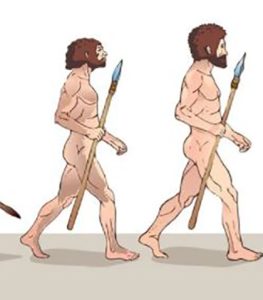Climate has always driven migration – new research suggests
A new study of the Earth’s climate over the past two million years suggests climate has always influenced human migration.
And the research, published in the journal Nature, suggests it also may have contributed to the emergence of the modern-day human species around 300,000 years ago.
 It amounts to the first clear evidence that climate might have had a significant role in human evolution, a theory that has been around since the 1920s.
It amounts to the first clear evidence that climate might have had a significant role in human evolution, a theory that has been around since the 1920s.
In the study, climate physicists ran a climate model on a supercomputer for six months to reconstruct how temperature and rainfall might have shaped what resources were available to humans over the past few million years.
The researchers, led by Axel Timmermann of South Korea’s Pusan National University, also looked at how long-term fluctuations in climate brought about by Earth’s astronomical movement might have created the conditions to spur human evolution.
The simulated analysis showed that an early human species, Homo Heidelbergensis, started expanding its habitat around 700,000 years ago. Scientists have thought that this species might have given rise to a series of others across the globe, including Neanderthals in Eurasia and Homo Sapiens somewhere in Africa.
The analysis suggests that the distribution of humanoid species across the globe was possible because a more elliptical orbit created wetter climate conditions that allowed the species to migrate more widely. The simulation also showed that the most habitable regions, in terms of climate, shifted over time.
The theory is based on the principle that push and pull of other planets alters Earth’s climate by changing both the planet’s tilt, and the shape of its orbit. Over 41,000-year cycles, Earth’s tilt oscillates, affecting the intensity of seasons and changing how much rain falls over the tropics. And over longer 100,000 year cycles, the Earth goes from having a more circular orbit – which brings more sunlight and longer summers – to having a more elliptical orbit, which reduces sunlight and can lead to periods of glacial formation.
The research suggests that humans evolved when Homo Heidelbergensis in southern Africa started losing liveable habitat during an unusually warm period; and the population could have evolved into Homo Sapiens by adapting to the hotter, drier conditions.
Read more here: Record-breaking simulation hints at how climate shaped human migration (nature.com)












